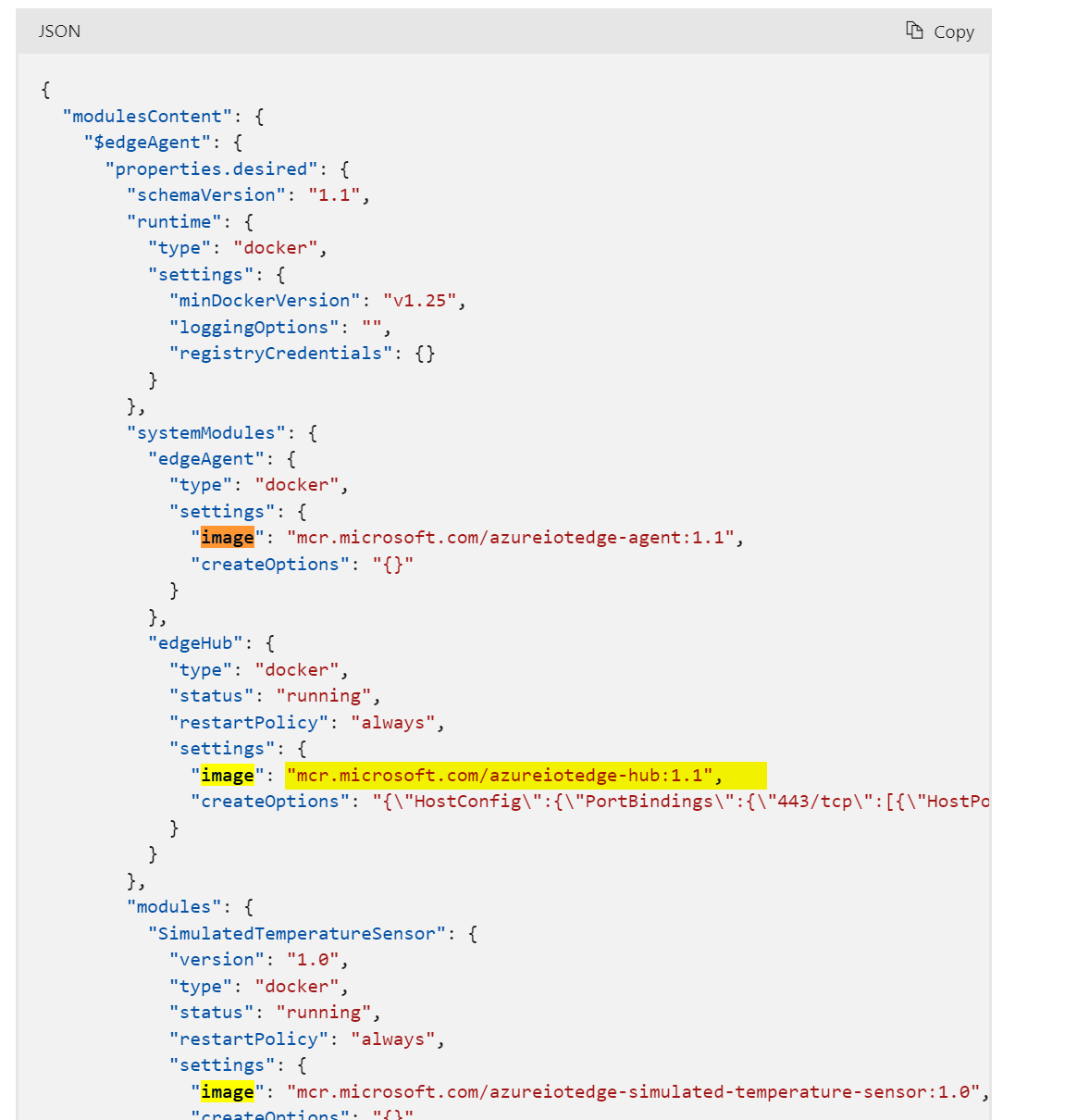Hello CARLOS ARTURO TAMAYO MOJICA,
I hope the following quick information will guide you with the initial query...
- Install the Azure IoT Edge extension for Visual Studio Code:
- Set up your Azure IoT Hub and Edge device:
- Create a deployment manifest:
Deploy Azure IoT Edge modules from Visual Studio Code
During the configure manifest step, you want to give the hub.docker.com address!
Configure a deployment manifest
{
"modules": {
"my_module": {
"version": "1.0",
"type": "docker",
"status": "running",
"restartPolicy": "always",
"settings": {
"image": "dockerhubusername/dockerhubimagename:tag",
"createOptions": {}
}
}
}
}
Replace "my_module", "dockerhubusername/dockerhubimagename:tag" with your preferred module and container image name and tag.

- Build and deploy the deployment manifest:
Also check the below info:
- Select the IoT Edge device and create a new file named
docker-creds.json.
- In the file, enter the following JSON object with the Docker Hub registry URL and credentials:
{
"docker": {
"registry": "https://index.docker.io/v1/",
"username": "<your docker hub username>",
"password": "<your docker hub password>"
}
}
- Replace
<your docker hub username> and <your docker hub password> with your Docker Hub account credentials.
- Update the deployment manifest file:
- Open the deployment manifest file (
deployment.template.json) and add a new module with the container image from Docker Hub, using the following format:
"module_name": {
"version": "1.0",
"type": "docker",
"status": "running",
"restartPolicy": "always",
"settings": {
"image": "docker.io/<username>/<image_name>:<tag>",
"registryCredentials": {
"server": "docker.io",
"username": "$CONTAINER_REGISTRY_USERNAME",
"password": "$CONTAINER_REGISTRY_PASSWORD"
}
}
}
```
1. Replace **`<username>/<image_name>:<tag>`** with the Docker Hub container image name and tag. Note that the **`server`** property in the **`registryCredentials`** object should be set to **`"docker.io"`**.
1. Push the deployment manifest to the Azure IoT Hub:
- In the Azure IoT Hub explorer, right-click on the IoT Hub and select "Create Deployment for Single Device".
- Select the IoT Edge device and select the deployment manifest file.
- Click "Create" to build and deploy the deployment manifest to the IoT Edge device.
